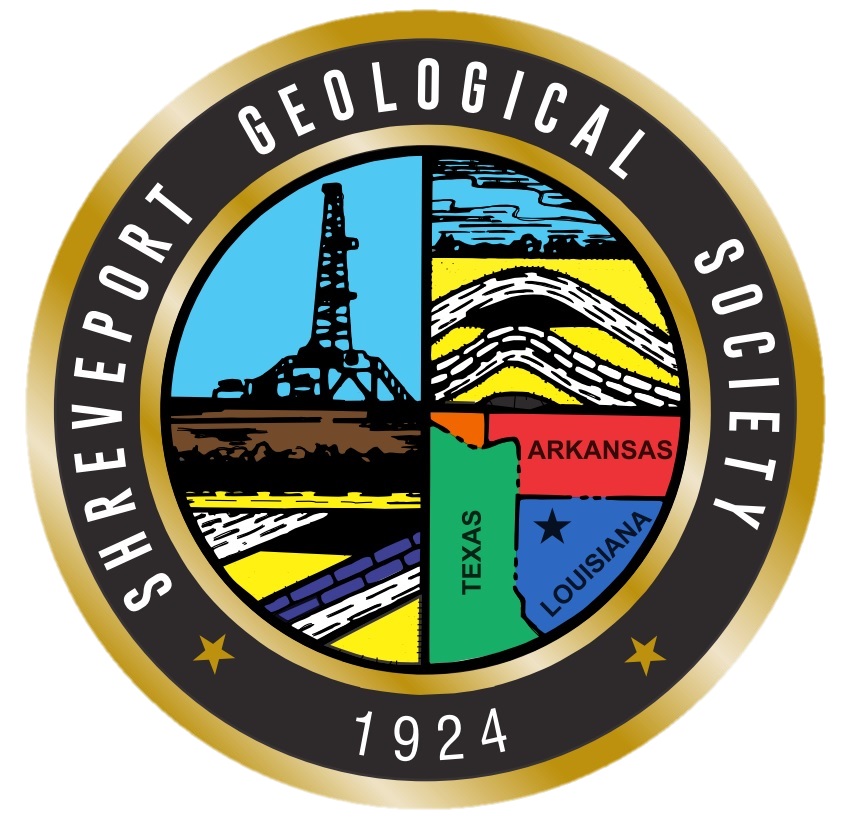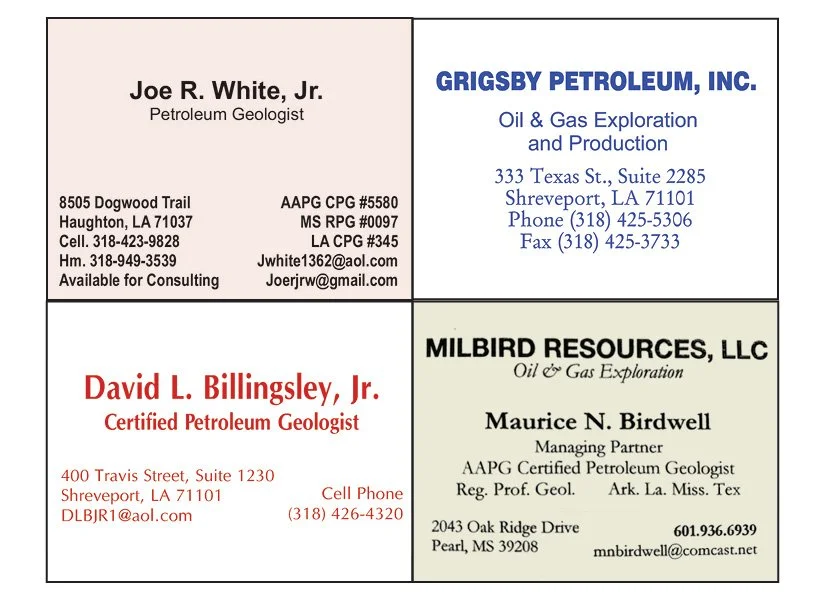In-Person
Where: The Petroleum Club of Shreveport, 15th floor
Cost: $25
If you’d like a seat, kindly use the form below to make your reservation by the preceding Friday.
We encourage members to invite guests, spouses, and friends to any of our meetings.
Virtual
Where: Zoom
Cost: $10
If you’d like to attend virtually, please pay with a credit card below and use the email address where you would like Zoom login details sent. Please make your reservation to attend virtually by noon the day before the meeting.
Biography
James E. Starnes, RPG
Graduate of Millsaps College Geology Department. Division Director for the surface geology and surface mapping research programs at MDEQ, Mississippi Office of Geology. 25 years of research and author of over 100 professional publications while conducting the classic work of the State Geological Survey in documenting the Mississippi’s geology, paleontology, geoarcheology, and mineral resources. President of the Mississippi State Board of Registered Professional Geologists. Member of the research consulting staff at the Mississippi Museum of Natural Science working with the conservation biology and vertebrate paleontology programs.
Abstract
Gravel Petrology, Geoarcheology, and new look at the evolution of the Yazoo Basin in the Lower Mississippi River Valley: Publication of the Greenwood 1:100,000 Geologic Quadrangle Map in Bolivar, Sunflower, Tallahatchie, Leflore, Carroll, Grenada, Washington, and Coahoma Counties, Mississippi.
This project was preceded by a geoarcheology study by the authors on the classification and age of landforms as it relates to archaeological sites towards the end of the last ice age during the Paleoindian and Early Archaic cultural periods in the northwest Yazoo Basin region of the Mississippi River Alluvial Plain. Great difficulty was encountered reconciling field observations as interpreted with new bare-earth LIDAR imagery with previous mapping literature interpreted through earlier topographic maps. The initial findings given in 2019 to the Southeastern Archaeological Conference demonstrated a clear need for updated mapping and a reinterpretation of the region. The authors’ previous research involved mapping and differentiation of Pleistocene and Tertiary units along the eastern valley wall and subcrop of the loess bluffs region. This work revealed previously undocumented details of the evolution of the ancestral Mississippi River during episodic glaciation as it cut down to its current entrenched. Combining these studies under cooperative grant funded by USGS’s StateMap program, the authors’ mapped a 1:100,000 scale area which include 32-individual 7.5 min. quadrangle maps, interpretive photo and figures, geological narrative, and 5 structural cross-sections demonstrating the character and stratigraphic relationships of the Middle to Late Eocene Tertiary subcrop units and Pleistocene to recent sediments. Units mapped at the surface in ascending stratigraphic order include: Middle Eocene (Claiborne) Kosciusko Formation, mid-Pleistocene Pre-loess Terrace Deposits, Late Pleistocene (Peorian) Loess, late Pleistocene stream terraces, Pleistocene to Holocene stream alluvium and alluvial fans, and delineated geomorphological features of the Mississippi River Alluvial Plain that range from late Pleistocene to Holocene in age.







































